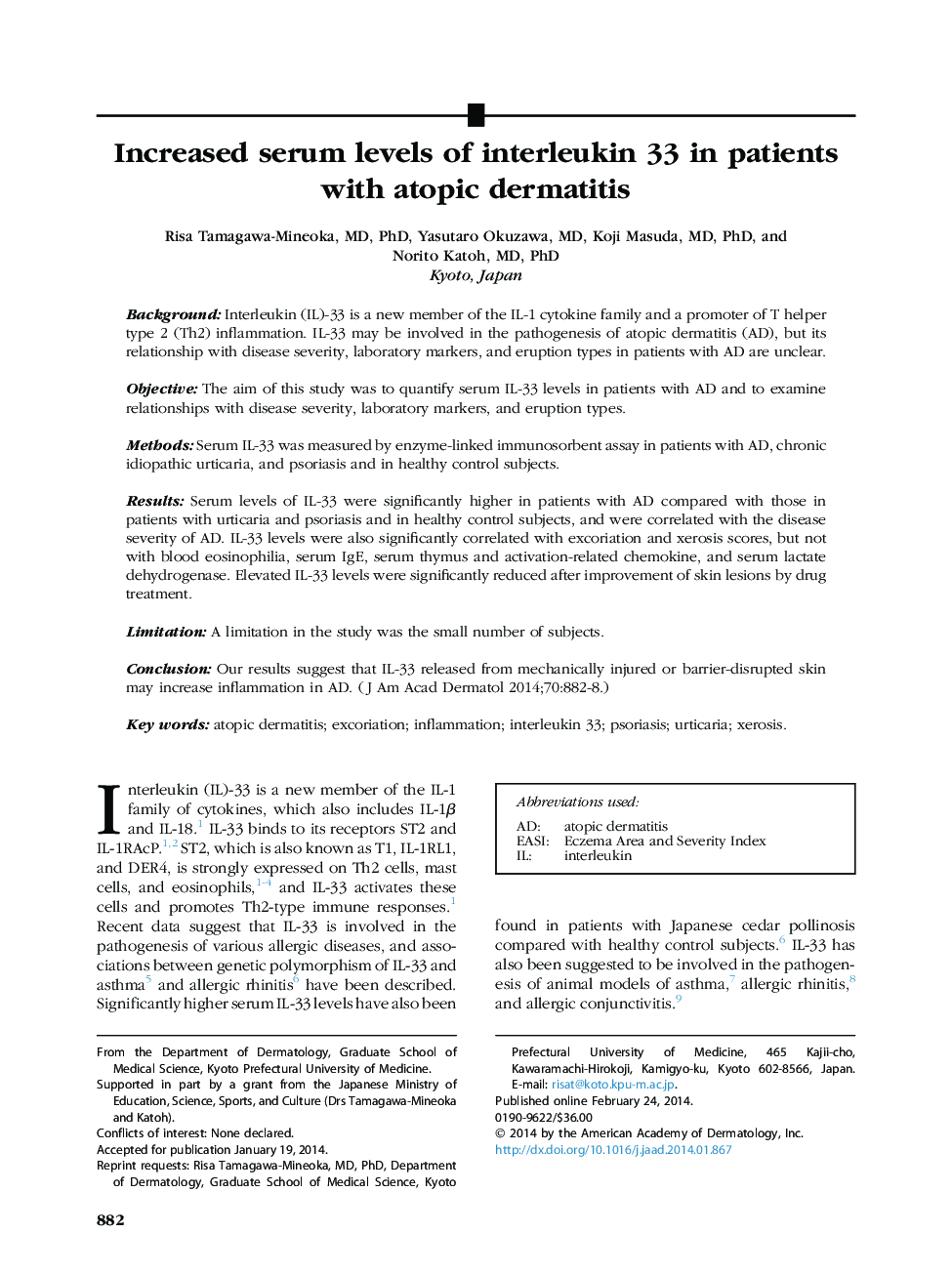| Article ID | Journal | Published Year | Pages | File Type |
|---|---|---|---|---|
| 6072632 | Journal of the American Academy of Dermatology | 2014 | 7 Pages |
BackgroundInterleukin (IL)-33 is a new member of the IL-1 cytokine family and a promoter of T helper type 2 (Th2) inflammation. IL-33 may be involved in the pathogenesis of atopic dermatitis (AD), but its relationship with disease severity, laboratory markers, and eruption types in patients with AD are unclear.ObjectiveThe aim of this study was to quantify serum IL-33 levels in patients with AD and to examine relationships with disease severity, laboratory markers, and eruption types.MethodsSerum IL-33 was measured by enzyme-linked immunosorbent assay in patients with AD, chronic idiopathic urticaria, and psoriasis and in healthy control subjects.ResultsSerum levels of IL-33 were significantly higher in patients with AD compared with those in patients with urticaria and psoriasis and in healthy control subjects, and were correlated with the disease severity of AD. IL-33 levels were also significantly correlated with excoriation and xerosis scores, but not with blood eosinophilia, serum IgE, serum thymus and activation-related chemokine, and serum lactate dehydrogenase. Elevated IL-33 levels were significantly reduced after improvement of skin lesions by drug treatment.LimitationA limitation in the study was the small number of subjects.ConclusionOur results suggest that IL-33 released from mechanically injured or barrier-disrupted skin may increase inflammation in AD.
